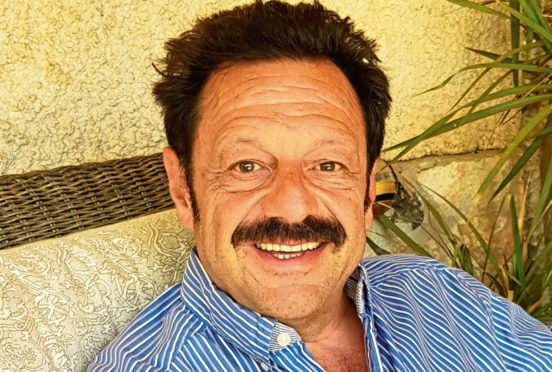
He has been witness to gun violence, a victim of attempted kidnappings, and has a birth heritage that would make some shudder.
Roberto Sendoya Escobar was in a cot beside his teenage mother when she was killed in a shoot-out during a secret mission led by a British MI6 agent to recover a cash hoard from a safe house used by a young criminal, Pablo Escobar, the man who would become the world’s most notorious drugs lord.
The baby, Escobar’s first-born son, was rescued and adopted by the MI6 agent who led the mission. Today, Phillip Witcomb (his adopted name) is an acclaimed fine artist living with his wife in a remote farm on the Mediterranean island of Mallorca.
The Netflix hit series Narcos may have brought Pablo Escobar back into the spotlight, but his son says the portrayal is quite different from the real criminal he describes in his new book, Son Of Escobar.
“Narcos is entertaining. But the problem with it is, it tells you that suddenly there is this 25-year-old super-hard-case drug dealer. It doesn’t tell you how a school dropout, who could hardly read and write, suddenly becomes the world’s greatest billionaire drug smuggler. Well, you can’t do that without help from governments, and that’s what my story’s about really.”
With his adoptive family, the young Phillip was transported into a world of privilege.
“I grew up very spoilt. My father (Patrick Witcomb) was very influential and wielded a lot of power. The president of Colombia gave me presents,” he recalls.
It wasn’t long before Escobar senior got wind of his young son’s whereabouts and the boy narrowly escaped being kidnapped by the drug lord’s dangerous henchmen on several occasions. Eventually, to gain Escobar’s trust, Patrick would take the boy to New Year’s Eve parties at a swanky hotel in the cartel chief’s home turf of Medellín, so his birth father could meet him.
“At the beginning it was a weird, intimidating feeling, but you do as you’re told. It was quite surreal because when my dad said I needed to speak to this guy, it’s a bit like when your parents introduce you to an uncle you don’t know.”
But it wasn’t until he was 24 that Patrick told his adopted son the truth about his real dad.
“There was total disbelief and some unprintable language when he told me, but I don’t think at 24 I was old enough to take it all in.”
In 1993, both his adoptive father and his birth father died (Patrick had Motor Neurone Disease; Escobar was shot dead by police in Medellín). When Patrick was on his deathbed, he gave him a piece of paper with lines of codes which, he said, revealed the secret hiding place of Escobar’s “missing millions”, the money he was tucking away. The code appears in the book.
“I know it’s not all in cash and he had time to convert it into other things,” is the only clue he offers. But his next book will shed more light on the matter, with a working title of The Secret Of The Missing Millions.
He has turned his life around, remarried and has no intention of returning to Colombia, except to make a documentary or a movie adaptation of the book.
“It’s too dangerous. And there’s nothing there for me. I’ve been turned into an Englishman, and I’m happy to go with that.”
Roberto Escobar – Son Of Escobar, Ad Lib, £14.99

Enjoy the convenience of having The Sunday Post delivered as a digital ePaper straight to your smartphone, tablet or computer.
Subscribe for only £5.49 a month and enjoy all the benefits of the printed paper as a digital replica.
Subscribe